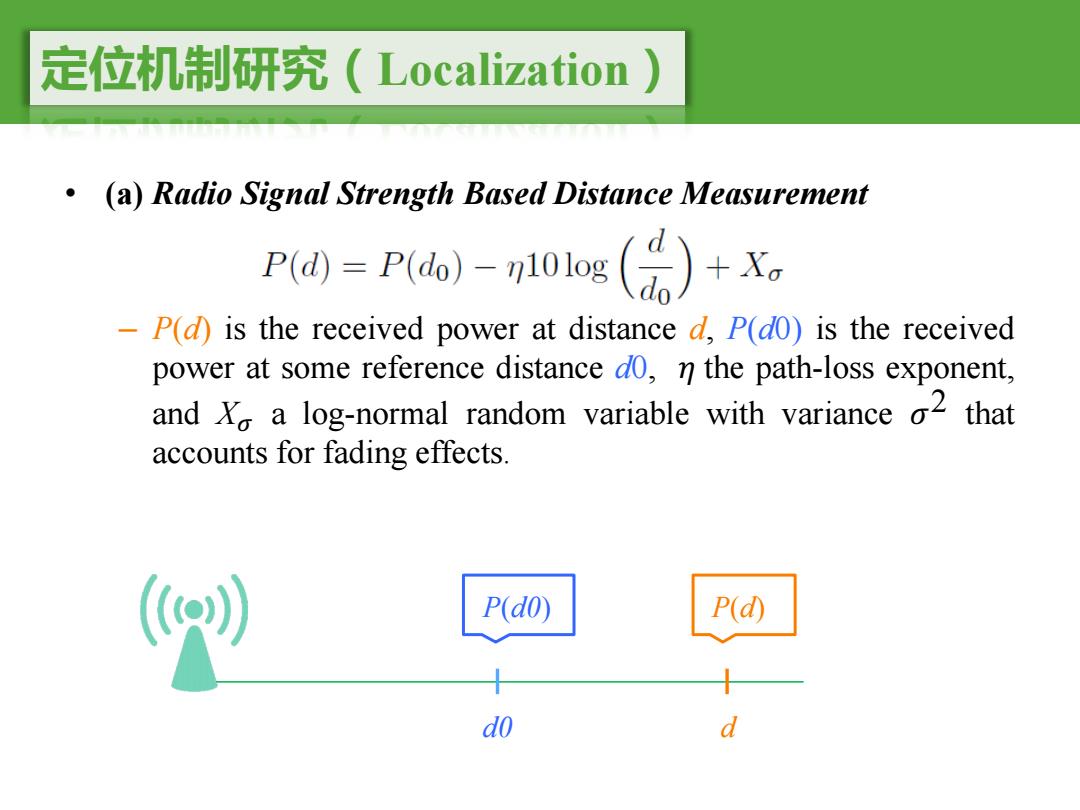
定位机制研究(Localization (a)Radio Signal Strength Based Distance Measurement P(d)=P(do)-n10log () +X -P(d)is the received power at distance d,P(do)is the received power at some reference distance do,n the path-loss exponent, and X a log-normal random variable with variance o2 that accounts for fading effects. P(do) P(d) do d
定位机制研究(Localization) • (a) Radio Signal Strength Based Distance Measurement – P(d) is the received power at distance d, P(d0) is the received power at some reference distance d0, � the path-loss exponent, and X. a log-normal random variable with variance �2 that accounts for fading effects. P(d0) P(d) d0 d
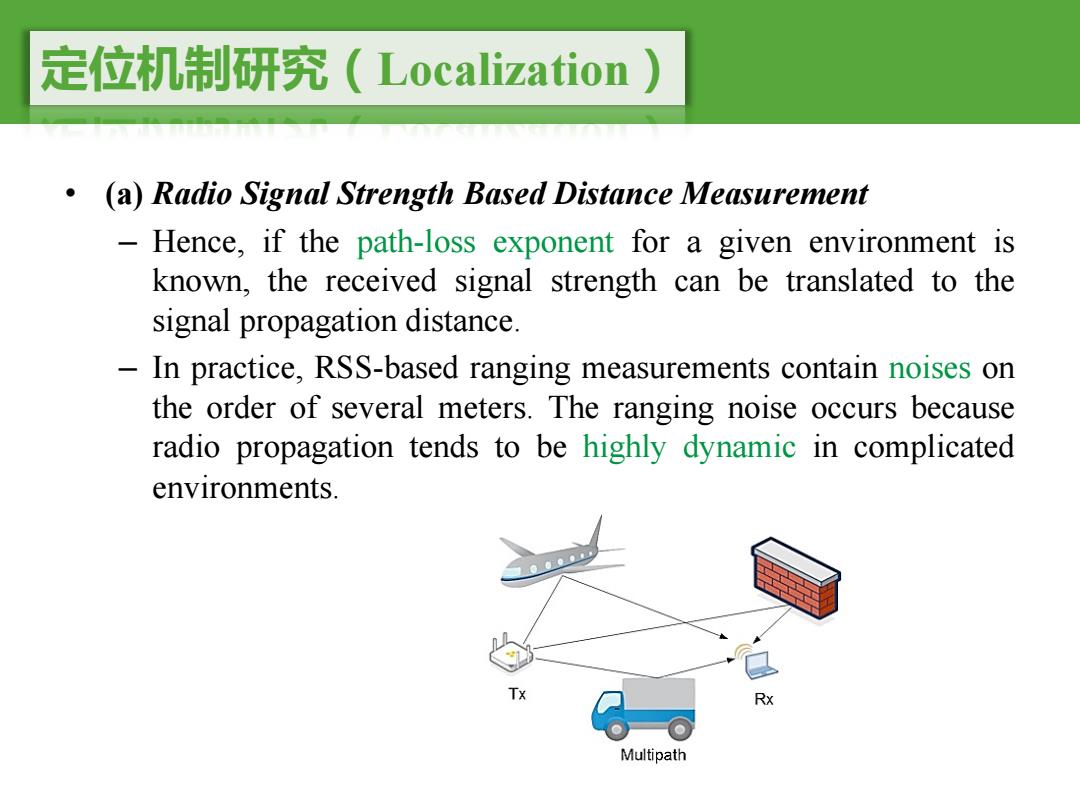
定位机制研究(Localization (a)Radio Signal Strength Based Distance Measurement Hence,if the path-loss exponent for a given environment is known,the received signal strength can be translated to the signal propagation distance. In practice,RSS-based ranging measurements contain noises on the order of several meters.The ranging noise occurs because radio propagation tends to be highly dynamic in complicated environments. Rx Multipath
定位机制研究(Localization) • (a) Radio Signal Strength Based Distance Measurement – Hence, if the path-loss exponent for a given environment is known, the received signal strength can be translated to the signal propagation distance. – In practice, RSS-based ranging measurements contain noises on the order of several meters. The ranging noise occurs because radio propagation tends to be highly dynamic in complicated environments
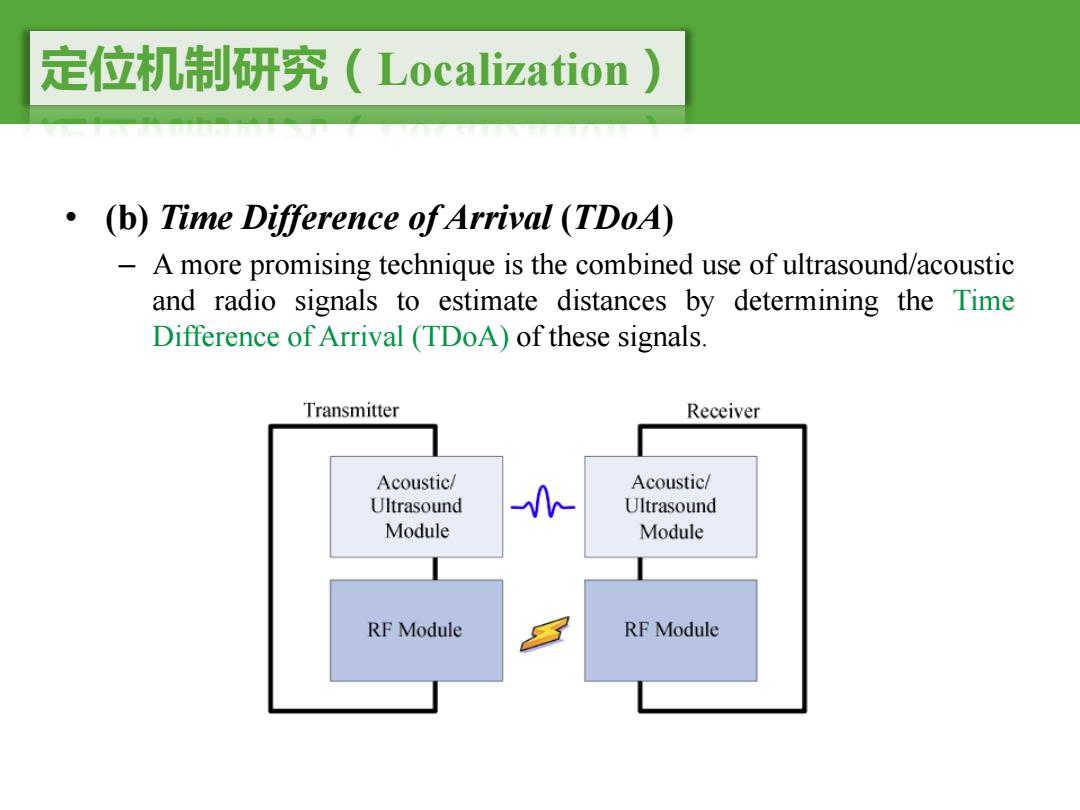
定位机制研究(Localization) .(b)Time Difference ofArrival (TDoA) -A more promising technique is the combined use of ultrasound/acoustic and radio signals to estimate distances by determining the Time Difference of Arrival (TDoA)of these signals. Transmitter Receiver Acoustic/ Acoustic/ Ultrasound Ultrasound Module Module RF Module RF Module
定位机制研究(Localization) • (b) Time Difference of Arrival (TDoA) – A more promising technique is the combined use of ultrasound/acoustic and radio signals to estimate distances by determining the Time Difference of Arrival (TDoA) of these signals
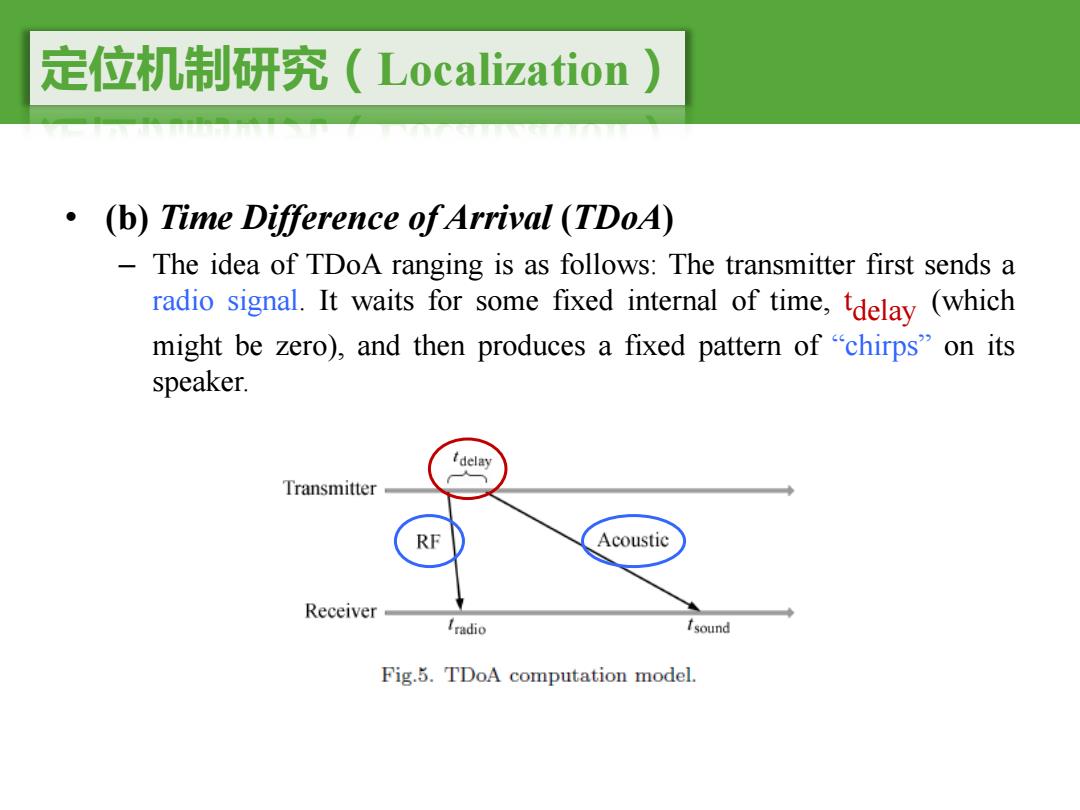
定位机制研究(Localization) .(b)Time Difference ofArrival (TDoA) The idea of TDoA ranging is as follows:The transmitter first sends a radio signal.It waits for some fixed internal of time,tdelay (which might be zero),and then produces a fixed pattern of "chirps"on its speaker. /delay Transmitter RF Acoustic Receiver Iradio Isound Fig.5.TDoA computation model
定位机制研究(Localization) • (b) Time Difference of Arrival (TDoA) – The idea of TDoA ranging is as follows: The transmitter first sends a radio signal. It waits for some fixed internal of time, t delay (which might be zero), and then produces a fixed pattern of “chirps” on its speaker
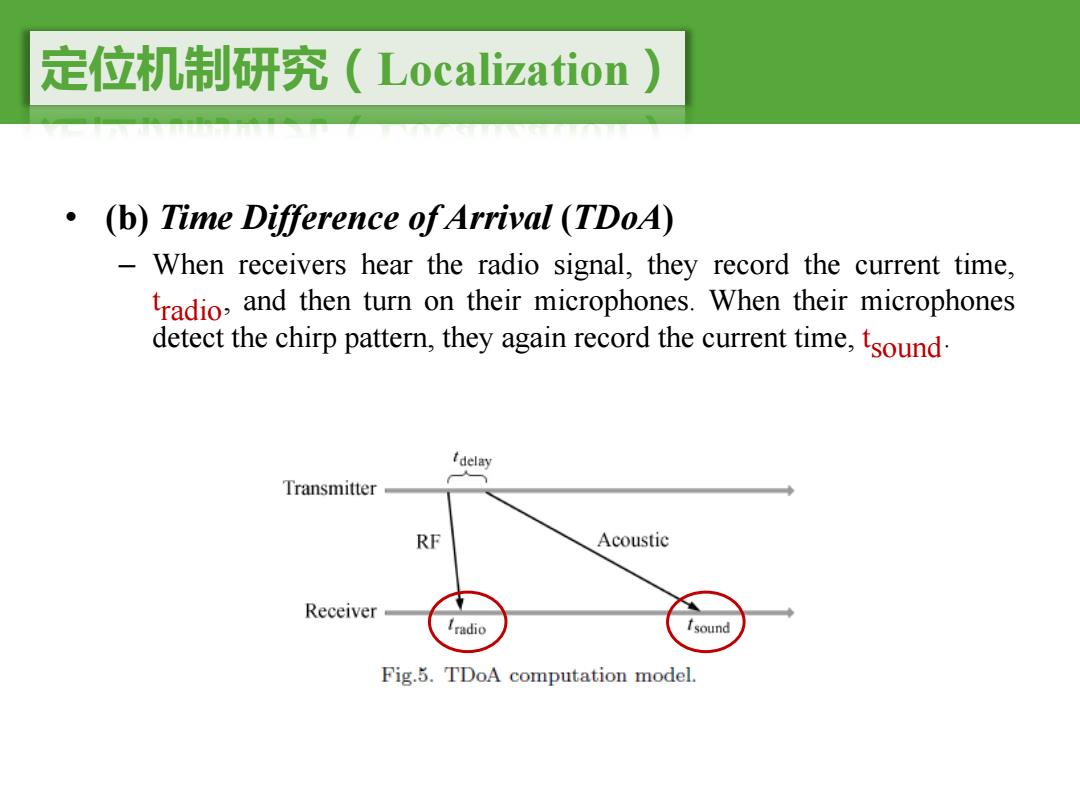
定位机制研究(Localization) ·(b)Time Difference of Arrival(TDoA) When receivers hear the radio signal,they record the current time, tradio,and then turn on their microphones.When their microphones detect the chirp pattern,they again record the current time,tsound delay Transmitter RF Acoustic Receiver Iradio fsound Fig.5.TDoA computation model
定位机制研究(Localization) • (b) Time Difference of Arrival (TDoA) – When receivers hear the radio signal, they record the current time, t radio, and then turn on their microphones. When their microphones detect the chirp pattern, they again record the current time, t sound